
The Essential Guide to UI Design
.pdf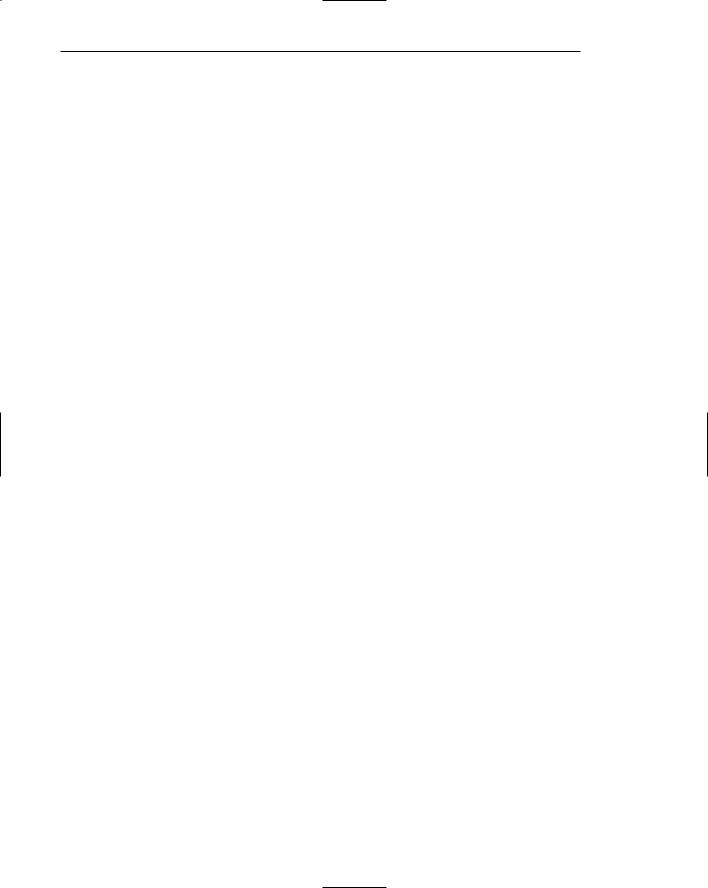
30 Part 1: The User Interface—An Introduction and Overview
GUI versus Web Page Design
GUI and Web interface design are similar. Both are software designs, they are used by people, they are interactive, they are heavily visual experiences presented through screens, and they are composed of many similar components. Significant differences do exist, however. The following paragraphs highlight the most significant differences. Table 2.2 provides a summary listing. Parts of this discussion are based upon Berry (2000) and Nielsen (1997a).
Devices. In GUI design, the characteristics of interface devices such as monitors and modems are well defined, and design variations tend to be restricted. Monitor display capabilities, such as installed fonts and screen size, are established and easily considered in the design process. In Web design, no assumptions about the user’s interface devices can be made. User devices may range from handheld mechanisms to high-end workstations. (In GUI design, the difference in screen area between a laptop and a high-end workstation is a factor of six; in Web page design, this difference may be as high as 100.) Connection speed bandwidths may also vary by a factor of 1,000. Consequently, WYSIWYG no longer exists in page design. In GUI design, the layout of a screen will look exactly as specified, and the Web page look will be greatly influenced by both the hardware and software. With the Web, the designer has to relinquish full control and share responsibility for the interface with users and their hardware and software.
User focus. GUI systems are about well-defined applications and data, and about transactions and processes. Thorough attention must usually be addressed to tasks in need of completion. The Web is primarily about information and navigation, an environment where people move back and forth in an unstructured way among many pages of information. Web use is most often characterized by browsing and visual scanning of information to find what information is needed. Increasingly, applications are now being found on the Web, however.
Data/information. GUI data is typically created and used by known and trusted sources, people in the user’s organization or reputable and reliable companies and organizations. The properties of the system’s data are generally known, and the information is typically organized in an understandable and meaningful fashion. A notion of shared data exists, as does a notion of data privacy. The Web is full of unknown content typically placed there by others unknown to the user. Typical users don’t put information on the Web (except for publishing their own pages). The reliability and truthfulness of found information cannot always be ascertained and trusted. Web content is usually highly variable in organization, and the privacy of the information is often suspect.
User tasks. GUI system users install, configure, personalize, start, use, and upgrade programs. They open, use, and close data files. Fairly long times are spent within an individual application, and people become familiar with many of its features and its design. Web users link to sites, browse or read pages, fill out forms, register for services, participate in transactions, and download and save content. Movement between pages and sites is often a very rapid activity, with people not gaining familiarity with many sites. The typical Web user has no notion of programs and tends to be much less aware of computer mechanics. Most GUI and Web users to not want to spend the effort required to set up or install anything.
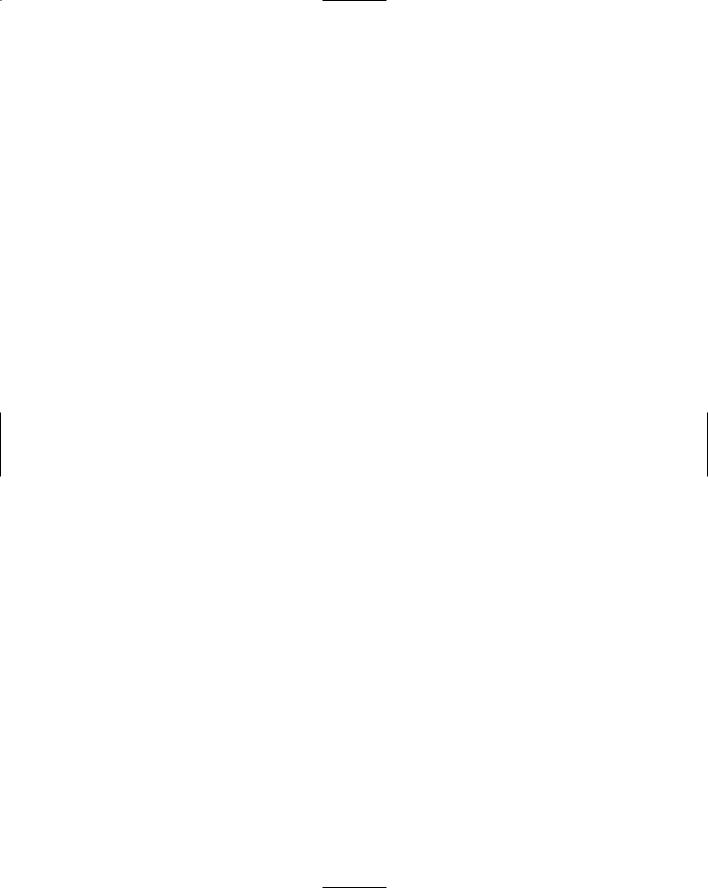
Chapter 2: Characteristics of Graphical and Web User Interfaces |
31 |
||
Table 2.2: GUI versus Web Design |
|
|
|
|
|
|
|
|
GUI |
WEB |
|
Devices |
User hardware variations |
User hardware variations |
|
|
limited. |
enormous. |
|
|
User hardware characteristics |
Screen appearance influenced |
|
|
well defined. |
by hardware being used. |
|
|
Screens appear exactly |
|
|
|
as specified. |
|
|
|
|
|
|
User Focus |
Data and applications. |
Information and navigation. |
|
Data/ |
Typically created and used by |
Full of unknown content. |
|
Information |
known and trusted sources. |
Source not always trusted. |
|
|
Properties generally known. |
Often not placed onto the Web |
|
|
Typically placed into system by |
by users or known people |
|
|
users or known people |
and organizations. |
|
|
and organizations. |
Highly variable organization. |
|
|
Typically organized in a |
Privacy often suspect. |
|
|
meaningful fashion. |
|
|
|
A notion of private and shared |
|
|
|
data exists. |
|
|
|
|
|
|
User Tasks |
Install, configure, personalize, |
Link to a site, browse or read |
|
|
start, use, and upgrade |
pages, fill out forms, register |
|
|
programs. |
for services, participate in |
|
|
Open, use, and close data files. |
transactions, download and |
|
|
Fairly long times spent within |
save things. |
|
|
an application. |
Movement between pages and |
|
|
Familiarity with applications |
sites very rapid. |
|
|
often achieved. |
Familiarity with many sites |
|
|
|
not established. |
|
|
|
|
|
User’s Conceptual |
Controlled and constrained |
Infinite and generally |
|
Space |
by program. |
unorganized. |
|
Presentation |
Windows, menus, controls, |
Two components — browser and |
|
Elements |
data, toolbars, messages, |
page. |
|
|
and so on. |
Within page, any combination |
|
|
Many transient, dynamically |
of text, images, audio, video, |
|
|
appearing and disappearing. |
and animation. |
|
|
Presented as specified |
May not be presented as |
|
|
by designer. |
specified by the designer — |
|
|
Generally standardized by |
dependent on browser, |
|
|
toolkits and style guides. |
monitor, and user specifications. |
|
|
|
Little standardization. |
|
|
|
|
|
(continued)
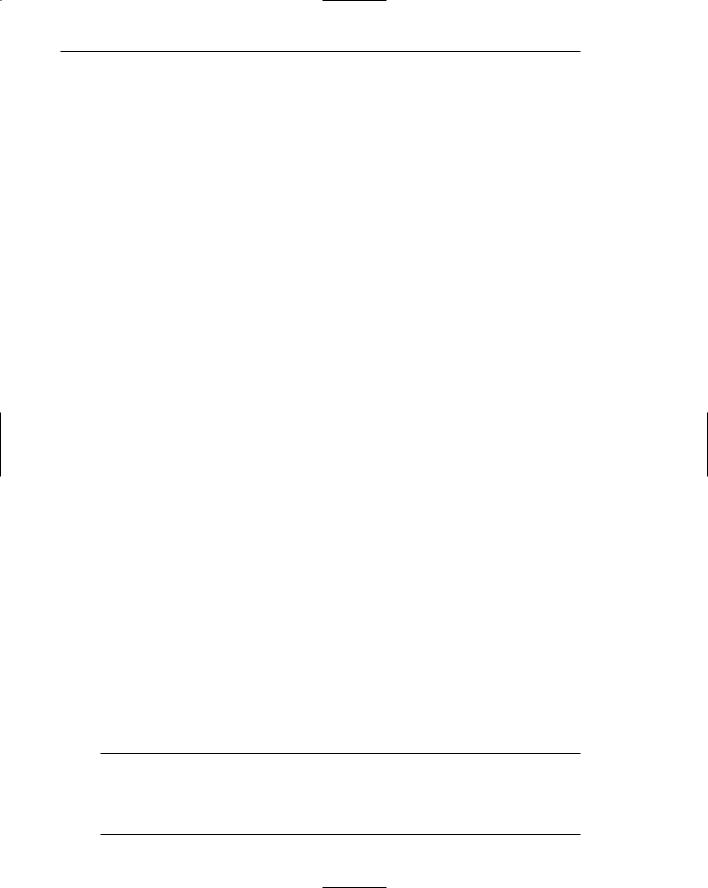
32 Part 1: The User Interface—An Introduction and Overview
Table 2.2 (continued)
|
GUI |
WEB |
Navigation |
Through menus, lists, trees, |
Through links, bookmarks, and |
|
dialogs, and wizards. |
typed URLs. |
|
Not a strong and visible concept. Significant and highly visible |
|
|
Constrained by design. |
concept. |
|
Generally standardized by |
Few constraints, frequently |
|
toolkits and style guides. |
causing a lost “sense of |
|
|
place.” |
|
|
Few standards. |
|
|
Typically part of page design, |
|
|
fostering a lack of consistency. |
Context |
Enables maintenance of a |
Poorer maintenance of a sense |
|
better sense of context. |
of context. |
|
Restricted navigation paths. |
Single-page entities. |
|
Multiple viewable windows. |
Unlimited navigation paths. |
|
|
Contextual clues become |
|
|
limited or are difficult to find. |
Interaction |
Interactions such as clicking |
Basic interaction is a single click. |
|
menu choices, pressing |
This can cause extreme changes |
|
buttons, selecting list choices, |
in context, which may not be |
|
and cutting/copying/pasting |
noticed. |
|
occur within context of active |
|
|
program. |
|
Response Time |
Nearly instantaneous. |
Quite variable, depending on |
|
|
transmission speeds, page |
|
|
content, and so on. Long |
|
|
times can upset the user. |
|
|
|
Visual Style |
Typically prescribed and |
Fosters a more artistic, individ- |
|
constrained by toolkits. |
ual, and unrestricted presen- |
|
Visual creativity allowed but |
tation style. Complicated by |
|
difficult. |
differing browser and display |
|
Little significant personalization. |
capabilities, and bandwidth |
|
|
limitations. |
|
|
Limited personalization available. |
|
|
|
System Capability |
Unlimited capability proportional |
|
to sophistication of hardware |
|
and software. |
Limited by constraints imposed by the hardware, browser, software, client support, and user willingness to allow features because of response time, security, and privacy concerns.
Task Efficiency |
Targeted to a specific audience |
|
with specific tasks. |
|
Limited only by the amount of |
|
programming undertaken to |
|
support it. |
Limited by browser and network capabilities.
Actual user audience usually not well understood.
Often intended for everyone.

Chapter 2: Characteristics of Graphical and Web User Interfaces |
33 |
||
Table 2.2 (continued) |
|
|
|
|
|
|
|
|
GUI |
WEB |
|
Consistency |
Major objective exists within and |
Sites tend to establish their own |
|
|
across applications. Aided by |
identity. |
|
|
platform toolkit and design |
Standards frequently set within |
|
|
guidelines. |
a site. |
|
|
Universal consistency in GUI |
Frequent ignoring of GUI guide- |
|
|
products generally created |
lines for identical components, |
|
|
through toolkits and design |
especially controls. |
|
|
guidelines. |
|
|
|
|
|
|
User Assistance |
Integral part of most systems |
No similar help systems. |
|
|
and applications. |
The little available help is built |
|
|
Accessed through standard |
into the page. |
|
|
mechanisms. |
Customer service support, if |
|
|
Documentation, both online and |
provided, oriented to product |
|
|
offline, usually provided. |
or service offered. |
|
|
Personal support desk also |
|
|
|
usually provided. |
|
|
Integration |
Seamless integration of all |
|
applications into the platform |
|
environment a major objective. |
|
Toolkits and components are key |
|
elements in accomplishing this |
|
objective. |
Apparent for some basic functions within most Web sites (navigation, printing, and so on).
Sites tend to achieve individual distinction rather than integration.
Security |
Tightly controlled, proportional |
Renowned for security exposures. |
|
to degree of willingness to |
Browser-provided security |
|
invest resources and effort. |
options typically not under- |
|
Not an issue for most home |
stood by average users. |
|
PC users. |
When employed, may have |
|
|
function-limiting side effects. |
|
|
|
Reliability |
Tightly controlled in business |
|
systems, proportional to |
|
degree of willingness to invest |
|
resources and effort. |
Susceptible to disruptions caused by user, telephone line and cable providers, Internet service providers, hosting servers, and remotely accessed sites.
User’s conceptual space. In a GUI environment the user’s conceptual space is controlled by the program and application. A user’s access to data is constrained, and space is made available where their data can be stored and managed. A Web user’s space is infinite and generally unorganized. Little opportunity for meaningful organization of personal information exists.
Presentation elements. The main presentation elements for GUIs are various kinds of windows, menus, controls, toolbars, messages, and data. Many elements are transient, dynamically appearing and disappearing based upon the current context
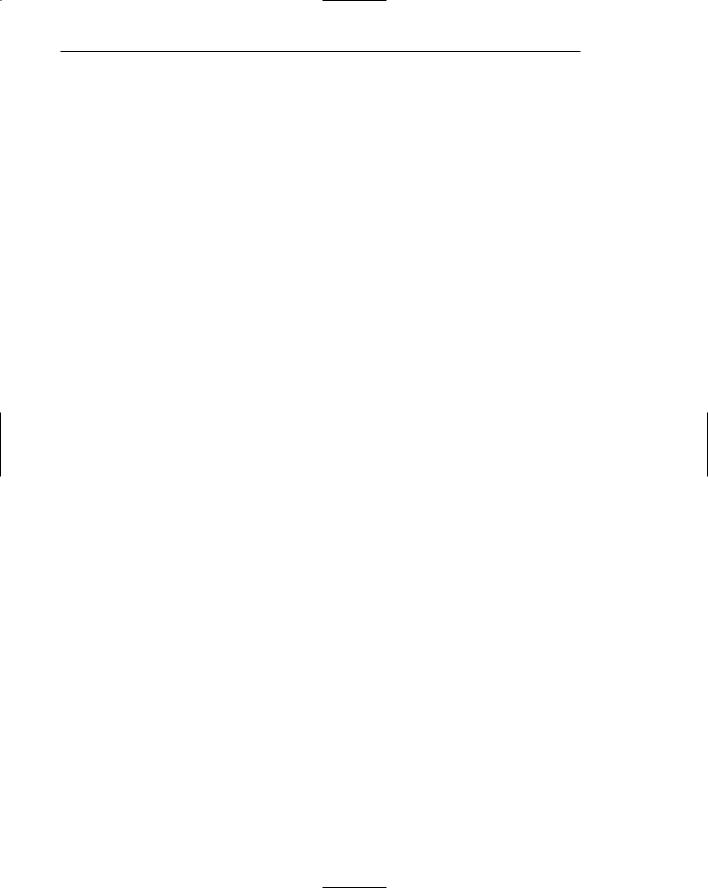
34 Part 1: The User Interface—An Introduction and Overview
of the interaction. They are also generally standardized as a result of the toolkits and style guides used. Elements are presented on screens exactly as specified by the designer. Web systems possess two components: the browser and page. Many browsers are substantially GUI applications with traditional GUI presentation elements. Within a page itself, however, any combination of text, images, audio, video, and animation may exist. Complex, cluttered, and visually distracting pages are easy to generate and often exist. This occurs because many designers have focused on implementing that which is new, pretty, or attention getting, with little thought given to usability. Interface style guides and guidelines to aid the design process are not known (or are ignored). Common toolkits and industry conventions, however, are now being proposed and will be slowly adopted. Also contributing to page design problems is the fact that a page may not be presented exactly as specified by the designer. The exact look of a page depends on the browser and monitor being used. Extreme variations in screen sizes for presenting pages exist. The user can change the look of a page by modifying its properties.
Navigation. GUI users navigate through structured menus, lists, trees, dialogs, and wizards. Paths are constrained by design (grayed out menu choices, for example), and the navigation mechanisms are standardized by toolkits and style guides. Navigation is a weakly established concept, and is a supplement to more important task functions and actions. Some aspects of a GUI provide a strong sense of navigation: the ellipsis on “to another window” indicators such as “Open...,” command buttons such as “OK” and “Cancel” that direct the user’s focus to another window, and wizards. Other aspects of GUI design do not provide a strong sense of navigation — pressing an Apply button, for example, does not result in something visible happening.
Web users control their own navigation through links, bookmarks, and typed URLs. Navigation is a significant and highly visible concept with few constraints. The immense size of the Web — and the user’s ability to easily wander just about anywhere — frequently causes a lost “sense of place,” or “Where am I right now?” feeling. Web navigation has few standards beyond the browser’s Back button and underlined links. Typically most navigation is part of page design that fosters a lack of consistency, and often confuses users. Establishing a continual sense of place for the user is a critical aspect of Web page design.
Context. GUI systems enable the user to maintain a better sense of context. Paths are restricted, and multiple overlapping windows may be presented and visible, enabling users to remember how what they are doing fits into the overall task picture. Web pages are single entities with almost unlimited navigation paths. They do not bring up separate dialog boxes to ask questions, provide or request supplemental information, or present messages. Contextual clues become limited or are hard to find.
Interaction. GUI interactions consist of activities such as clicking menu choices, pressing buttons, selecting choices from a list, keying data, and cutting, copying, or pasting within context established by an open window and an active program. The basic Web interaction is a single click. This click can cause extreme changes in context such as moving to another site or changing the displayed information
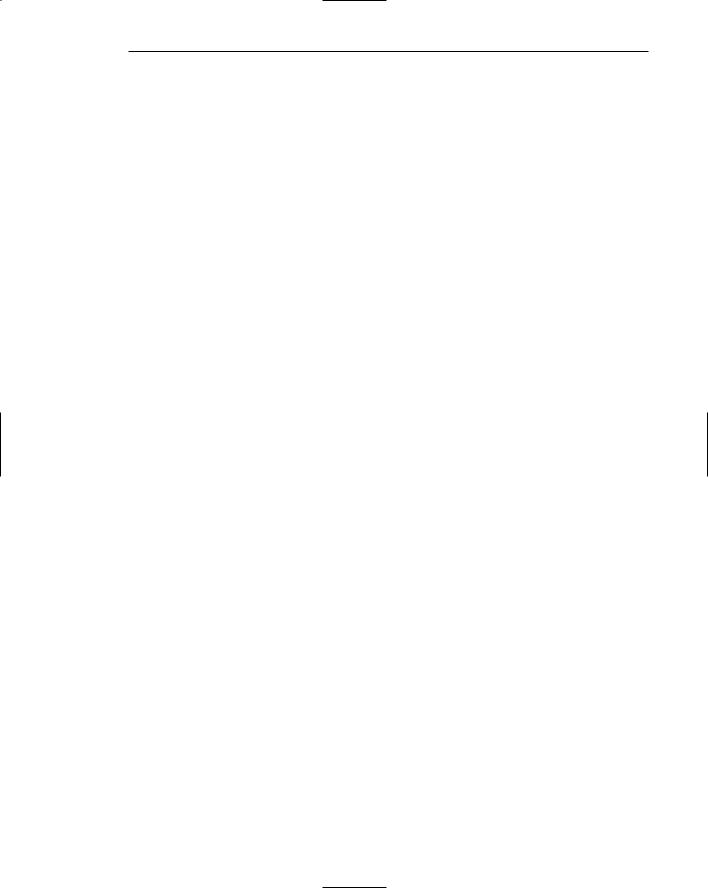
Chapter 2: Characteristics of Graphical and Web User Interfaces 35
within a site. The user may not notice subtle changes when they occur. Additionally, the browser provides parallel mechanisms such as the Back button that may function differently depending on context. The distinction between an action and a navigation link is not always obvious.
Response time. Compared to the Web, response times with a GUI system are fairly stable, if not nearly instantaneous. Web response times can be variable, and often aggravatingly slow. Line transmission speeds, system loads, and page content can have a dramatic impact. Long response times can upset and frustrate users.
Visual style. In GUI systems, the visual style is typically prescribed and constrained by toolkits. (Exceptions are entertainment and multimedia applications.) Visual creativity in screen design is allowed but it is difficult to do. While some user options and style choices do exist, little opportunity exists for screen personalization. In Web page design, a more artistic, individual, and unrestricted presentation style is allowed and encouraged. Much design freedom exists, but differing browser and display capabilities, multiple screen sizes, and bandwidth limitations, often complicate and restrict this freedom. Limited personalization of the system is available, at a browser or site level, for users.
System capability. GUI system capabilities are limited only in proportion to the capability of the hardware in terms of speed, memory, and configuration, and the sophistication of the software. The Web is more constrained, because it is limited by constraints imposed by the hardware, browser, and software. It is also limited by the willingness of the page owner to provide certain functions and elements, and the willingness of the user to allow features because of response time, security, and privacy issues and concerns.
Task efficiency. GUI systems are targeted to a specific audience performing specific tasks. Generally, the efficiency of performing a task is limited only by the amount of programming undertaken to support it. Browser and network capabilities limit Web task efficiency. The actual user audience is usually not well understood because many Web sites are intended for everyone.
Consistency. Consistency in GUI system design is a major objective in most development efforts. While they are far from perfect, an attempt is made to be consistent both within applications and across applications. Many organizations possess interface and screen design standards and toolkits to aid in the standardization process. Toolkits and guidelines also allow a certain degree of universal consistency in GUI products. In Web page design, the heavy emphasis on graphics, a lack of design standards, and the desire of Web sites to establish their own identities results in very little consistency across sites. Web sites often establish standards within a site, but in too many instances developers ignore guidelines existing for GUI components used in Web pages. These problems are found especially in the presentation of screen controls on pages.
User assistance. User assistance is an integral part of most GUI systems applications. Users access this assistance through standard mechanisms such as the F1 key and Help menus. Message and status areas are also provided on the screen. Documentation, both online and offline, is normally provided, as is a support desk to answer user questions and provide guidance and assistance. Web pages
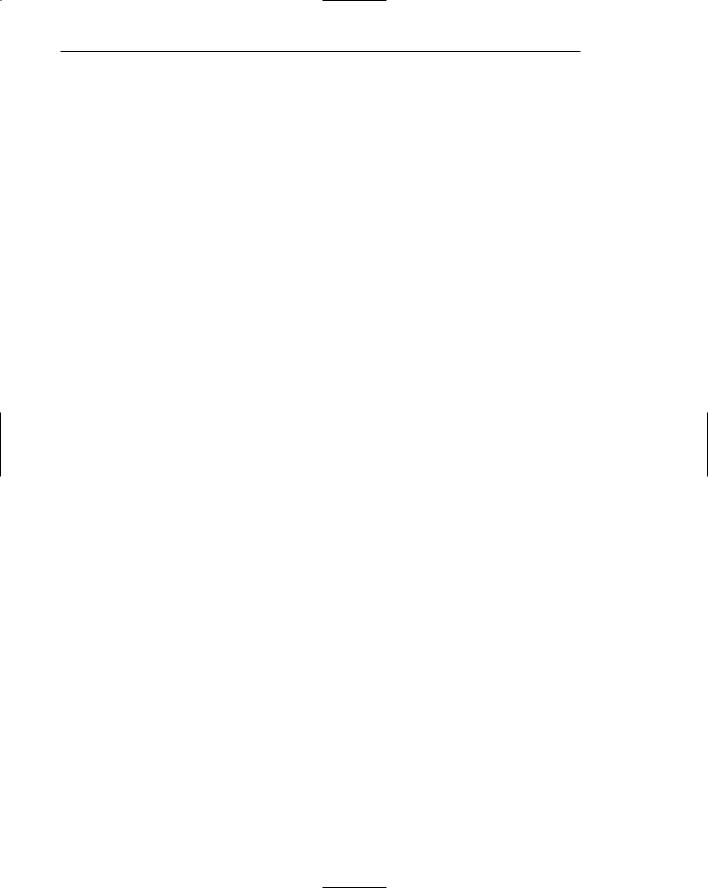
36 Part 1: The User Interface—An Introduction and Overview
do not yet provide similar help systems. What little help that is available is built into the page. Customer service support, if provided, is generally oriented to the product or service offered. GUI browsers may provide GUI-type assistance, so the user sees two different assistance approaches. Deficiencies in Web page help then become more obvious.
Integration. A primary goal of most GUI applications is the seamless integration of all pieces. Common functions are supported across applications and import/ export capabilities exist. Again, toolkits and their components are key elements in accomplishing this objective. In Web design, some integration is apparent within a site for basic functions such as navigation and printing. But because sites strive for individual distinction, interoperability between sites is almost nonexistent.
Security. In a GUI environment, security and data access can be tightly controlled, in proportion to the degree of willingness of an organization to invest resources and effort. For home applications, security is not an issue for most PC users. The Web is renowned for security exposures. This is a major inhibitor of Web use for both businesses and consumers. Browser-provided security options have typically not been well understood by average Web users. When employed, these security options often have function-limiting side effects (such as disabled cookies). Attempts to create a more trustworthy appearance are being made through the use of security levels and passwords to assure users that the Web is a secure environment.
Reliability. Like security, reliability in GUI systems is established and controlled in proportion to the degree of willingness of an organization to invest resources and effort. The computer being used influences reliability as does, if applicable, the local area network. Both are in the control of the using organization. Web reliability is susceptible to disruptions from many directions. Telephone line and cable providers, Internet service providers, hosting servers, and remotely accessed sites all can contribute to the problem. Accessed applications and user mistakes may also cause reliability problems. A lack of reliability can be a great inhibitor of Web use.
In conclusion, from a design implication perspective, GUI and Web differences can be extensive. Today these differences must be considered in Web design, although many GUI interface design techniques and guidelines are applicable in Web design. In the future many of these GUI-Web differences will diminish or disappear as the discrepancies are addressed by technology.
In developing a Web system, always evaluate each GUI guideline for direct applicability in any development effort. Also, do not simply transport an entire GUI application or design to the Web without evaluating it in terms of the implications described earlier. Some applications or designs may require significant changes, others a simple fine-tuning. One so far unmentioned aspect that both GUI and Web systems do have in common is “Know your user.” Involving them throughout the redesign process will ensure the best transition to the Web. (More about knowing your users follows in Step 1.)
Printed Pages versus Web Pages
While Internet history spans a couple of decades, that of the printed page measures more than five and one-half centuries. Research and experience with printed pages
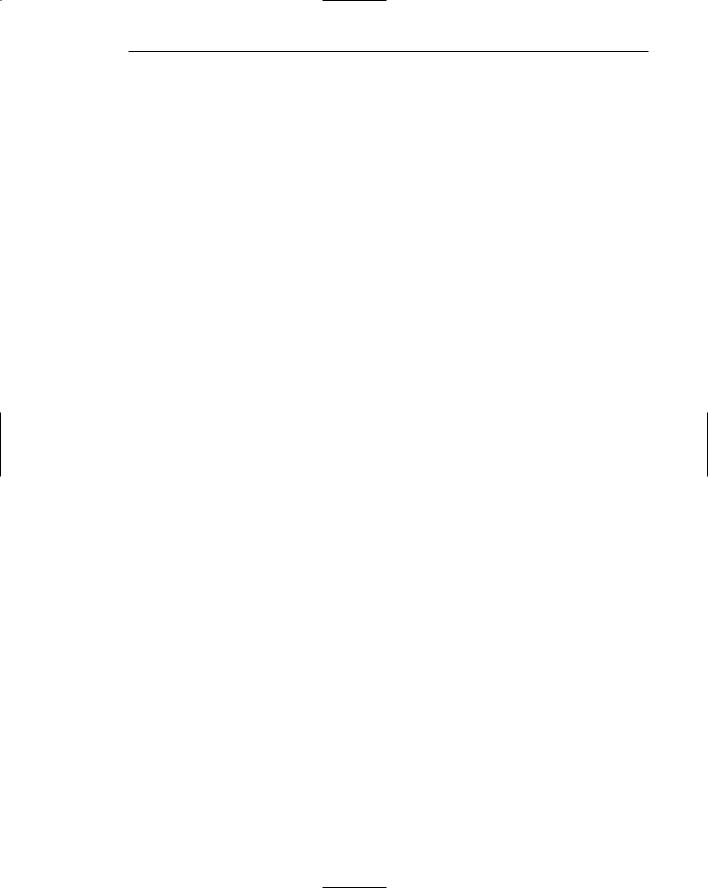
Chapter 2: Characteristics of Graphical and Web User Interfaces 37
through these centuries has created a fundamental and accepted set of guidelines for editorial style, element presentation, and text organization. Many of the basic guidelines, clear, comprehensive, and consistent, can and are being applied to Web page design. Web page design, however, is different in many aspects from the design of books, documents, newspapers, and other similar materials. These differences require rethinking, researching, and reformulating many of these guidelines for use in Web page design. Many of these differences have already been identified. Others will surface as Web experience grows and research is conducted. In the following paragraphs, the major differences between print and Web page design are briefly described. Implications for Web page design are also summarized.
Page size. Printed pages are generally larger than their Web counterparts. They are also fixed in size, not variable like Web pages. A printed page can be designed as one entity, the designer being assured that the final product will possess an integrated and complete look. Although Web pages are usually designed as a complete entity, they are presented in pieces with dimensions that differ depending on the user’s technology (browser, monitor, and so on). The visual impact of the printed page is maintained in hard-copy form, while on the Web all that usually exists are snapshots of page areas. The visual impact of a Web page is substantially degraded, and the user may never see some parts of the page because their existence is not known or requires scrolling to bring into view. The design implications: The top of a Web page is its most important element, and signals that parts of a page lie below the surface must always be provided to the user.
Page rendering. Printed pages are immensely superior to Web pages in rendering. Printed pages are presented as complete entities, and their entire contents are available for reading or review immediately upon appearance. Web page elements are often rendered slowly, depending upon things like line transmission speeds and page content. Dozens of seconds may be consumed waiting for a page to completely appear. Impatient users may not wait and move on to somewhere else. Design implications: Provide page content that downloads fast, and give people elements to read immediately so the sense of passing time is diminished. (The ultimate goal: a bandwidth fast enough to download a Web page as fast as one can turn a paper page.)
Page layout. With the printed page, layout is precise with much attention given to it. With Web pages, layout is more of an approximation, and is negatively influenced by deficiencies in design toolkits and the characteristics of the user’s browser and hardware, particularly screen sizes. Design implication: Understand the restrictions and design for the most common user tools.
Page resolution. Today the resolution of displayed print characters still exceeds that of screen characters, and screen reading is still slower than reading from a document. Design implication: Provide an easy way to print long Web documents. (The ultimate goal: a screen resolution sharp enough to render type crisply enough so that screen reading speed reaches that of newspaper reading.)
User focus. Printed pages present people with entire sets of information. Estimations of effort needed to deal with the document are fairly easily made, with size and the nature of the material being strong contributors. Some printed pages may be read sequentially (a novel) and others partially (a newspaper) and somewhat sequentially (the sports section first, perhaps?). Other forms of printed material
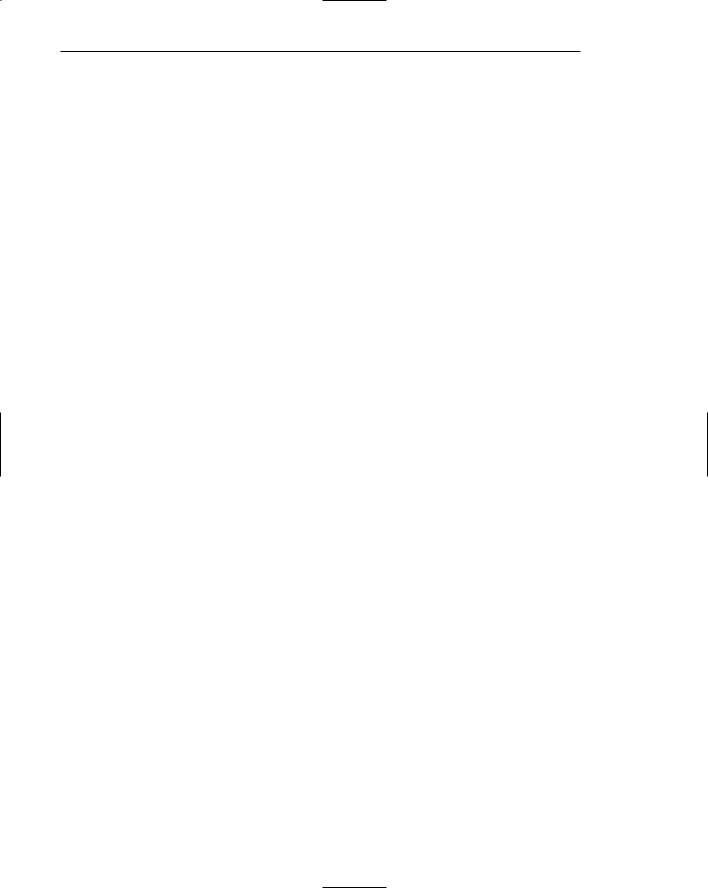
38 Part 1: The User Interface—An Introduction and Overview
may simply be skimmed (a sales brochure), but this skimming is usually systematic in some way. Web pages present people with individual snapshots of information, often with few clues about structure and sequence, and rarely with a few cues about length and depth. People also have a sense that the body of Web information potentially available is unlimited, and that information paths can lead anywhere. With few content size cues available and a huge information base, a common resulting behavior of Web users is to skim the information presented and look for what is most relevant to their task or need. This is done for personal efficiency and so as not to tax one’s patience. Design implications: Create easy-to- scan pages and limit the word count of textual content. Also, provide overviews of information organization schemes, clear descriptions of where links lead, and estimations of sizes of linked pages and materials.
Page navigation. Navigating printed materials is as simple as page turning. It is a motor skill learned early in life and never thought of as navigation or a design element. Substantial interaction between pages is rare because the process is essentially sequential. Navigating the Web requires innumerable decisions concerning which of many possible links should be followed. It requires asking oneself questions such as these: What is at the end of this link? Where is it? Will it address my need or solve my problem? Design implications are similar to the aforementioned: Provide overviews of information organization schemes and clear descriptions of where links lead.
Sense of place. With paper documents, you derive a sense of where you are through a mixture of graphic and editorial organization, and size cues supplied by the design of the document. The document is an object with physical characteristics. Paging through printed material is an orderly process, sequential and understandable. Electronic documents provide none of these physical cues. All that is visible is a small collection of text, graphics, and links hinting that much else lies somewhere underneath. Moving through the Web links can cause radical shifts in location and context. Paging using the browser’s Back button steps one back through links visited and may involve passing through different documents. Fixed locations that provide cues to support one’s memory concerning the location of things are nonexistent. All these factors cause a person to easily lose a sense of place and lead to confusion. Design implication: Build cues into Web pages to aid the user in maintaining a sense of place.
Interactivity. Printed page design involves letting the eyes traverse static information, selectively looking at information and using spatial combinations to make page elements enhance and explain each other. Web design involves letting the hands move the information (scrolling, pointing, expanding, clicking, and so on) in conjunction with the eyes. Information relationships, static or dynamic, are expressed chronologically as part of the interaction and user movements. Doing is more memorable and makes a stronger impact than simply seeing. No print precedents exist for this style of interaction. A better understanding of this process (as well as better hardware and software) is needed to enhance interactivity.
Page independence. Because moving between Web pages is so easy, and almost any page in a site can be accessed from anywhere else, pages must be made freestanding. Every page is independent, and its topic and contents must be explained
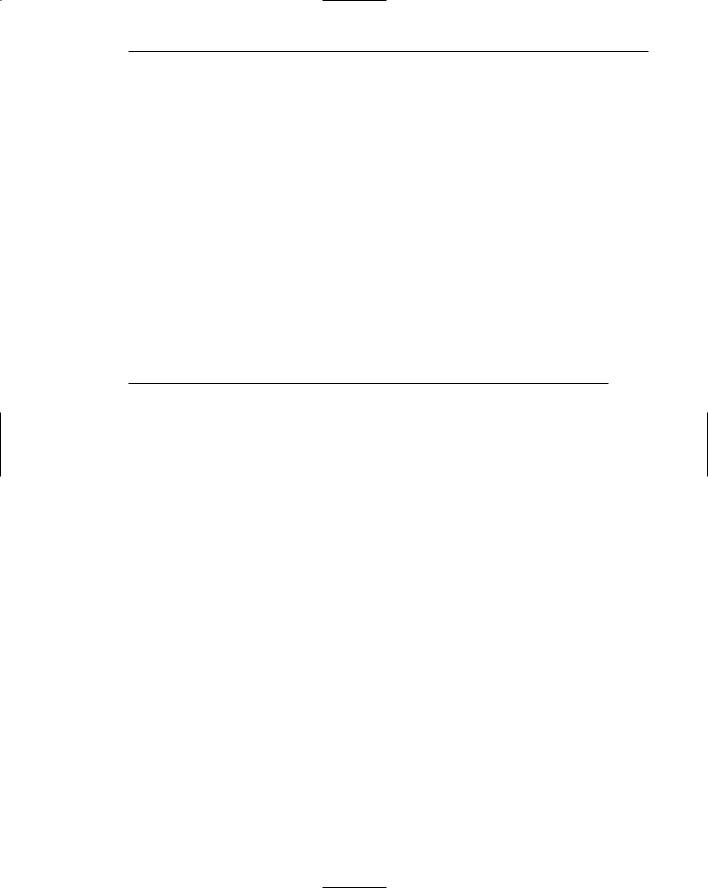
Chapter 2: Characteristics of Graphical and Web User Interfaces 39
without assumptions about any previous page seen by the user. Printed pages, which are sequential, fairly standardized in organization, and provide a clear sense of place, are not considered independent. Specific types of content (table of contents, author, index, and so on) are easily found in well-established document locations. Design implication: Provide informative headers and footers on each Web page.
In conclusion, many of the basic print guidelines can be applied to Web page design. As shown earlier, however, printed material design differs from Web page design in many aspects. New guidelines must continue to be developed, implemented, and modified as technology advances and our understanding of Web interaction increases. For the moment, apply existing guidelines where relevant, and new guidelines as necessary. Part 2 of this book describes many of these guidelines. What must be avoided are things that made sense in the print world, but do not meet today’s needs in Web interface design.
The Merging of Graphical Business Systems
and the Web
The strength of the Web lies in its capability of hosting applications, linking databases, and the processing occurring on a variety of machines within a company or organization. Within a closed system, queries against databases can be made, internal communication performed, and information useful to employees can be made available. Current systems can also be implemented with more traditional GUI interfaces. Graphical business systems and the Web are merging into a common entity. These Web systems are called intranets.
Characteristics of an Intranet versus the Internet
An intranet has many of the same characteristics as the Internet. They differ, however, in some important ways. The following discussion is partly based upon Nielsen (1997b):
Users. The users of intranets, being organization employees, know a lot about the organization, its structure, its products, its jargon, and its culture. Internet sites are used by customers and others who know much less about the organization, and often care less about it. The intranet user’s characteristics and needs can be much more specifically defined than those of the general Internet user.
Tasks. An intranet is used for an organization’s everyday activities, including complex transactions, queries, and communications. The Internet is mainly used to find information, with a supplementary use being simple transactions.
Type of information. An intranet contains detailed information needed for organizational functioning. Information is often be added or modified. The Internet usually presents more stable information: marketing and customer or client information, reports, and so forth.
Amount of information. Typically, an intranet site is much larger than an organization’s Internet site. Massive amounts of information and processes seem to be
